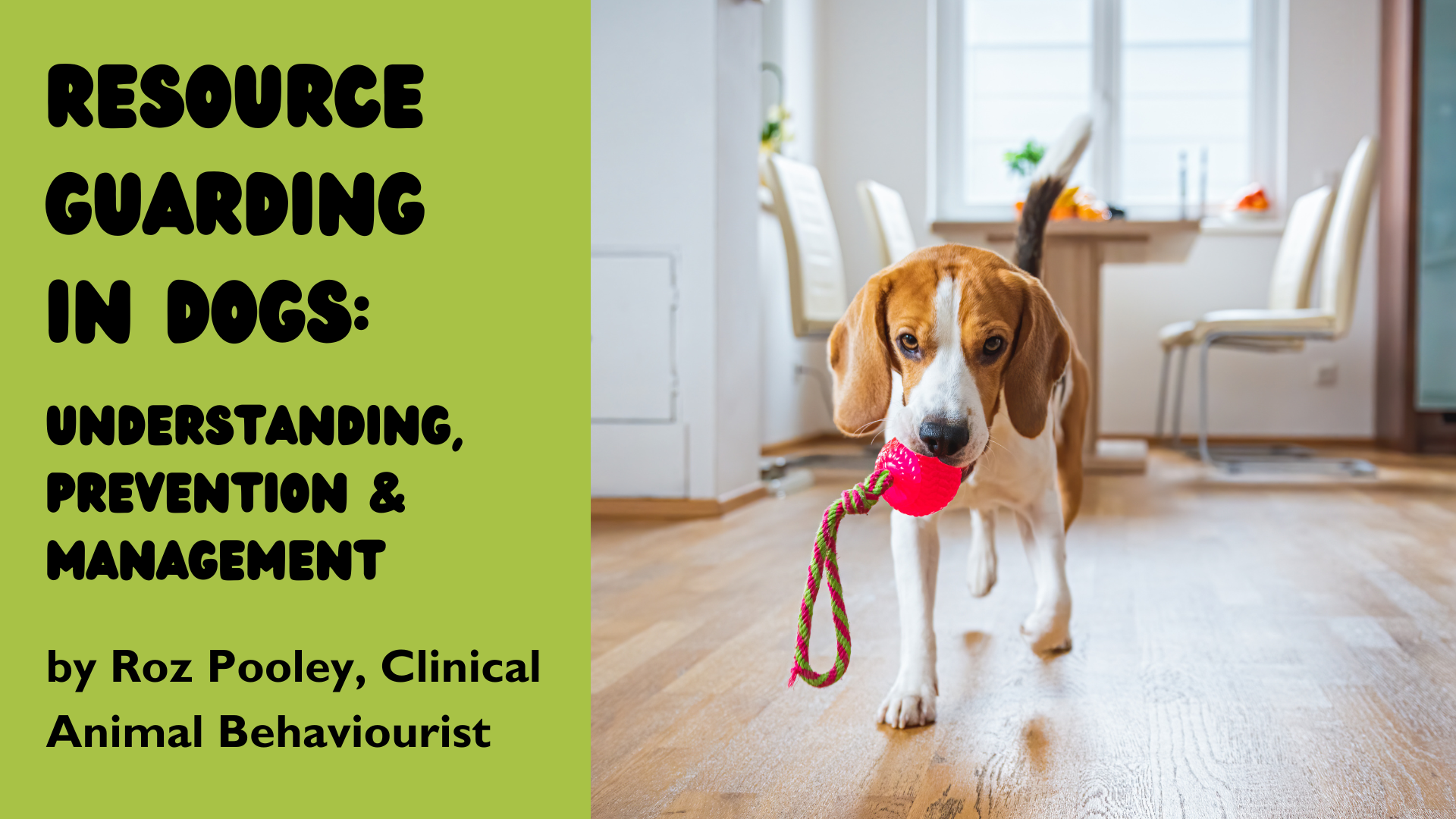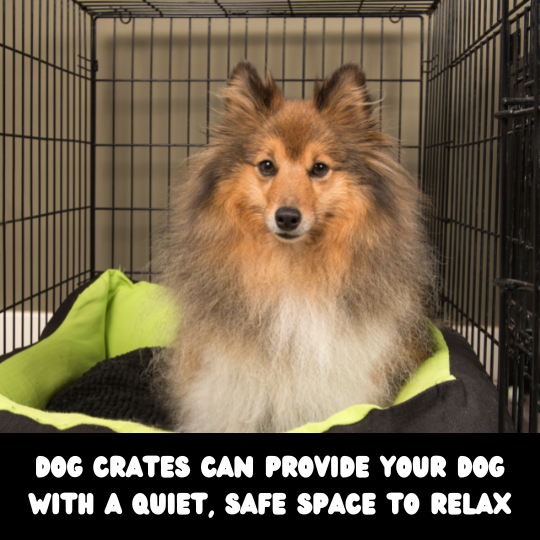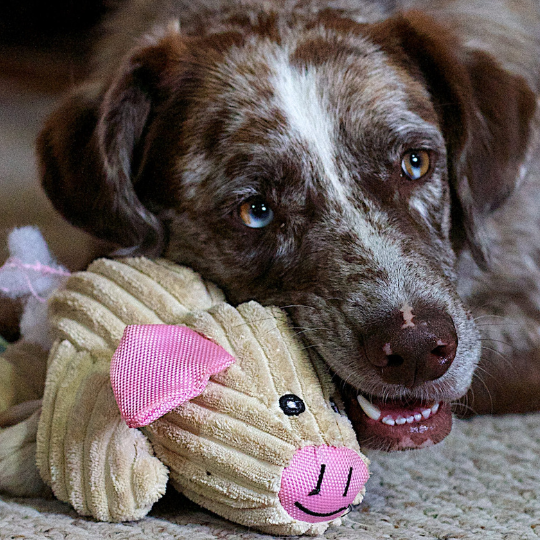Resource Guarding in Dogs: Understanding, Prevention & Management

by Roz Pooley, The Mutty Professor
Resource guarding, in some contexts, is a totally normal canine behaviour. It serves the function to maintain access to resources, which would be crucial for the survival of a free-ranging dog or wild canid.
However, in pet dogs, this behaviour has the potential to escalate significantly and can sadly become dangerous to other dogs or humans and stressful for all involved, including the dog who does the resource guarding.
Examples of resources are;
food (in their bowl), chews, treats, toys, found or dropped (out of place) items such as socks and rubbish, a human (because they are associated with resources) and locations (doorways, resting places and areas associated with other resources).
Resource Guarding Behaviours can include;
freezing/tensing up over the resource, looking at the challenger (dog or person approaching) with a ‘hard eye/stare’, placing a paw over the resource, grabbing the resource and moving away, snatching /gulping the resource frantically OR suddenly stopping eating/playing, growling, lip curling, charging/lunging (to drive away the threat), snapping and biting.
Some breeds or cross breeds show a high prevalence of resource guarding behaviours, with Cocker Spaniels, Golden Retrievers and Poodle crosses (predominantly Labradoodles and Cockerpoos) being those I most frequently see with human-directed guarding behaviours. Border Collies and Rescue Dogs from Overseas I tend to see more for dog-directed resource guarding behaviours.
Health Problems
Whilst resource guarding can be associated with high levels of anxiety, it is very commonly linked to a health problem (which in itself can cause anxiety).
Gastro-intestinal issues, such as parasitic infection or inflammation (can be caused by a variety of things, including food intolerances) and dental pain can contribute to guarding behaviours. Dogs may want the food, but don’t feel physically comfortable enough to consume it there and then.
General discomfort, such as muscular skeletal pain or atopic (skin) disease, can lead to dogs feeling on edge and more sensitive about the personal space.
For this reason, if your dog shows resource guarding behaviour, you should get them checked over by a vet and only work with a behaviour professional who works via veterinary referral. The ABTC has a register of professionals who are assessed and qualified.
Environment
So often, guarding stems from dogs not getting the space and quiet they need in order to relax. Resting and feeding spots that are in areas of the home with lots of noise (such as when in the kitchen or under the stairs), frequent footfall (hallways) or where people are approaching directly can be problematic for dogs.

Learned Behaviour
Sometimes, with the best of intentions, owners can accidentally teach their dog to guard resources. Overzealous removal of items being picked up by puppies, for fear they’ll come to harm, is often a trigger for the onset of guarding behaviours, as can following the dangerous advice to pick up their dog’s food bowl while they are eating.
Here are my top tips on how to prevent and respond to resource guarding;
1. Do you REALLY have to take it off your dog?
Is it safe for your dog to have? Is it valuable to you?
If the answer is “yes” and “no”, then ignore it! Let your dog explore with their mouths. They don’t have thumbs, so their mouths are how they pick things up.
Examples of safe, non-valuable items are; tea towels, tissue, cardboard, large plastic bottles and, depending on the strength of your dog/puppy’s jaw, some wellington boots and shoes!
If you swoop in and take everything off your dog, you are adding value to these resources and this can increase the likelihood of your dog picking up items in the future.
“This must be important, because my human REALLY, REALLY wants it! I’ll grab it more quickly when the opportunity next arises”.
In some instances, dogs can even learn to rapidly consume resources (edible and non edible) as a means of keeping them. Or, they may run away with it- and when you chase, they learn this is a fun game.
By ignoring it, when possible, your dog gets the opportunity to realise the item isn’t that interesting and drop it on their own accord. Over time, the novelty for picking up found items should wear thin.
2. Trade for treats or toys
Forceful removal of items can create opportunity for defensive behaviour, even if your intentions are good. Like us, dogs can find it frustrating or threatening to have someone swiftly move into their personal space and snatch something off them.
The safest option is to trade the item for treats or toys. Remember, you should reserve this for items that are NOT safe and which ARE valuable. You don’t want to reinforce your dog for picking things up.
3. Give your dog space
Dogs should be able to eat and chew in peace. Sometimes they can be social eaters, where they enjoy a chew near or even on someone, or next to another dog.
However, you should be mindful of how proximity of other dogs and people affects your dog and ensure they get the space and time they need to enjoy things fully.
With this in mind, you absolutely do not need to take your dog or puppy’s bowl from them while they are eating to teach them NOT to resource guard. In fact, doing this is more likely going to teach them to guard their food. I know I wouldn’t be best pleased if someone snatched my dinner away.

4. Don’t get into a conflict over it
If your dog shows guarding behaviours, please back off and give them space. If you choose to confront them, by shouting and telling them off, you run the risk of your dog escalating to higher intensity aggressive (defensive) behaviours- and most people will sensibly back off to avoid a bite.
You don’t want your dog to learn to skip all the low-level signals and go straight for snapping and trying to bite! So, if you see lower levels signals, move away.
If you need to get an item off your dog for their own safety (or because it’s valuable to you) and trading isn’t working, ringing the doorbell or picking up their walking gear (harness and dog lead) tends to work well as last resort strategies.
Conflict reinforces resource guarding. It’s best to avoid fighting fire with fire. Backing off will help your dog perceive you as a lesser threat and be less likely to guard from you in the future.
5. Teach “Drop”
Caution has to be taken in how you teach this if your dog is an established resource guarder. However, teaching your dog that the word “drop” means you have something better is a great way of preventing resource-guarding behaviours.
6. Enrichment
So often resource guarders are given less enrichment as a means of managing their behaviour. Sometimes, resource guarding stems from too litter enrichment, and the value of novel things when finally given is so high, the dog fears losing something so special.
It's important that all dogs, including resource guarders, are given enriching activities.
A varied, fresh food diet (such as Nutriment Raw Food) complimented by high-value training treats can, over time, reduce the novelty value of high value, smelly foods.
Chewing is a great behaviour for dogs to do, but may need to be carefully considered with resource guarders. They may need less hard or less smelly chews, or for them to be given in a safe place where no one approaches.
Enrichment obstacle courses are another way of allowing dogs some controlled exposure to novel items. The items used and location they are placed in requires careful consideration for you and your dog’s safety. But ideally, your dog should be able to manoeuvre around items looking for treats, without thinking ‘OMG, an out of place item, I’ll grab that now!’.
Resource guarding behaviour can be challenging to work with, do be sure to employ the support of a suitably qualified professional (from the ABTC register) if you need help.





